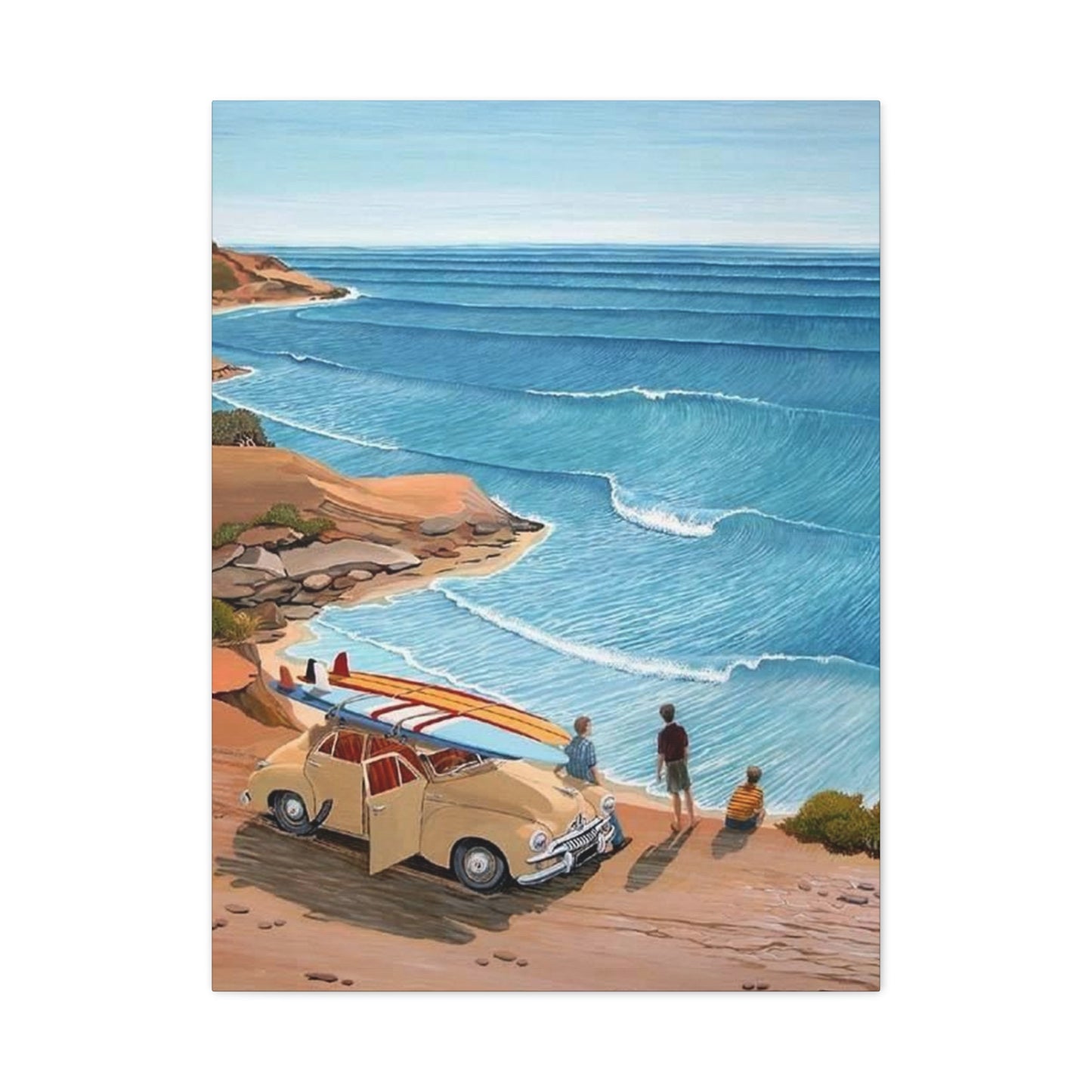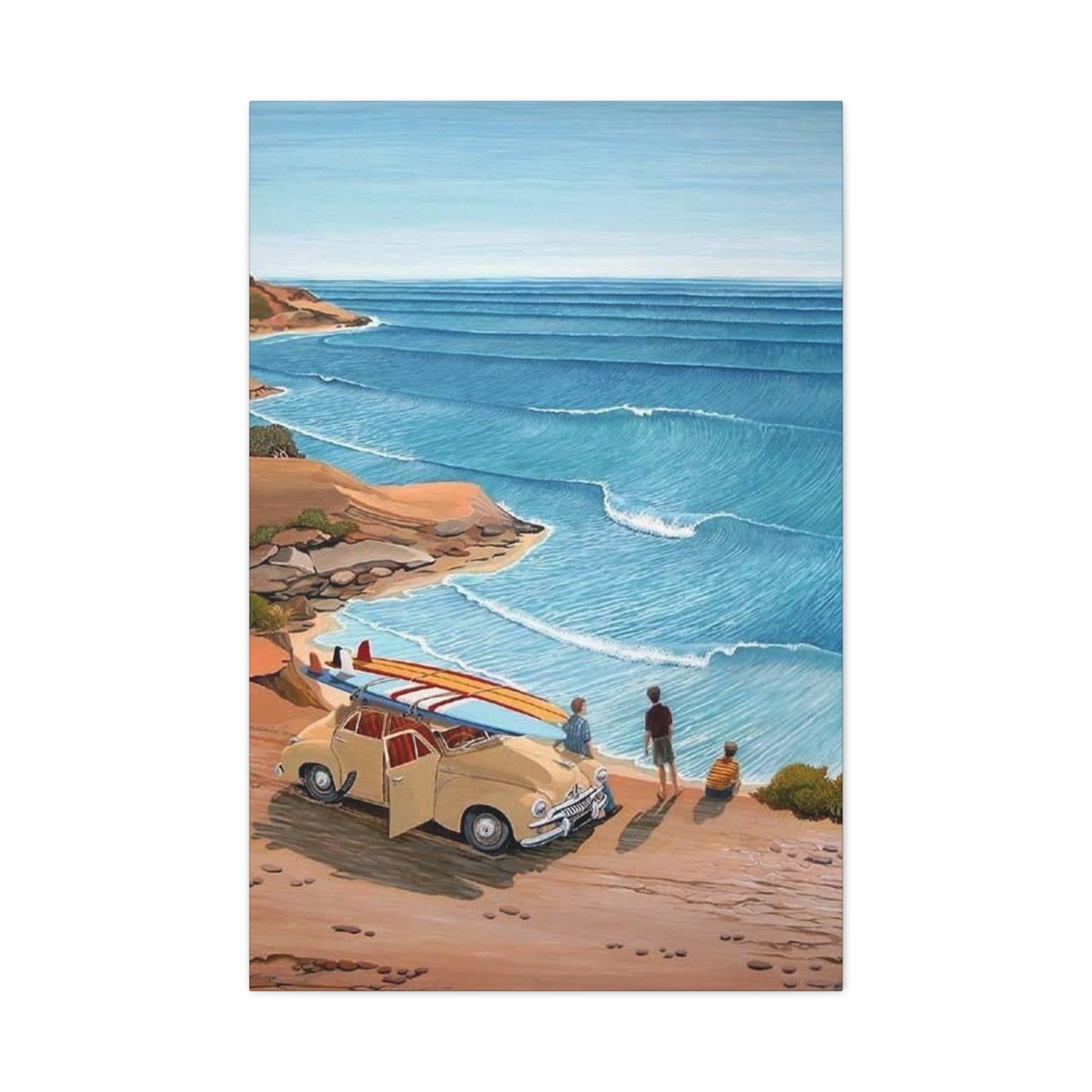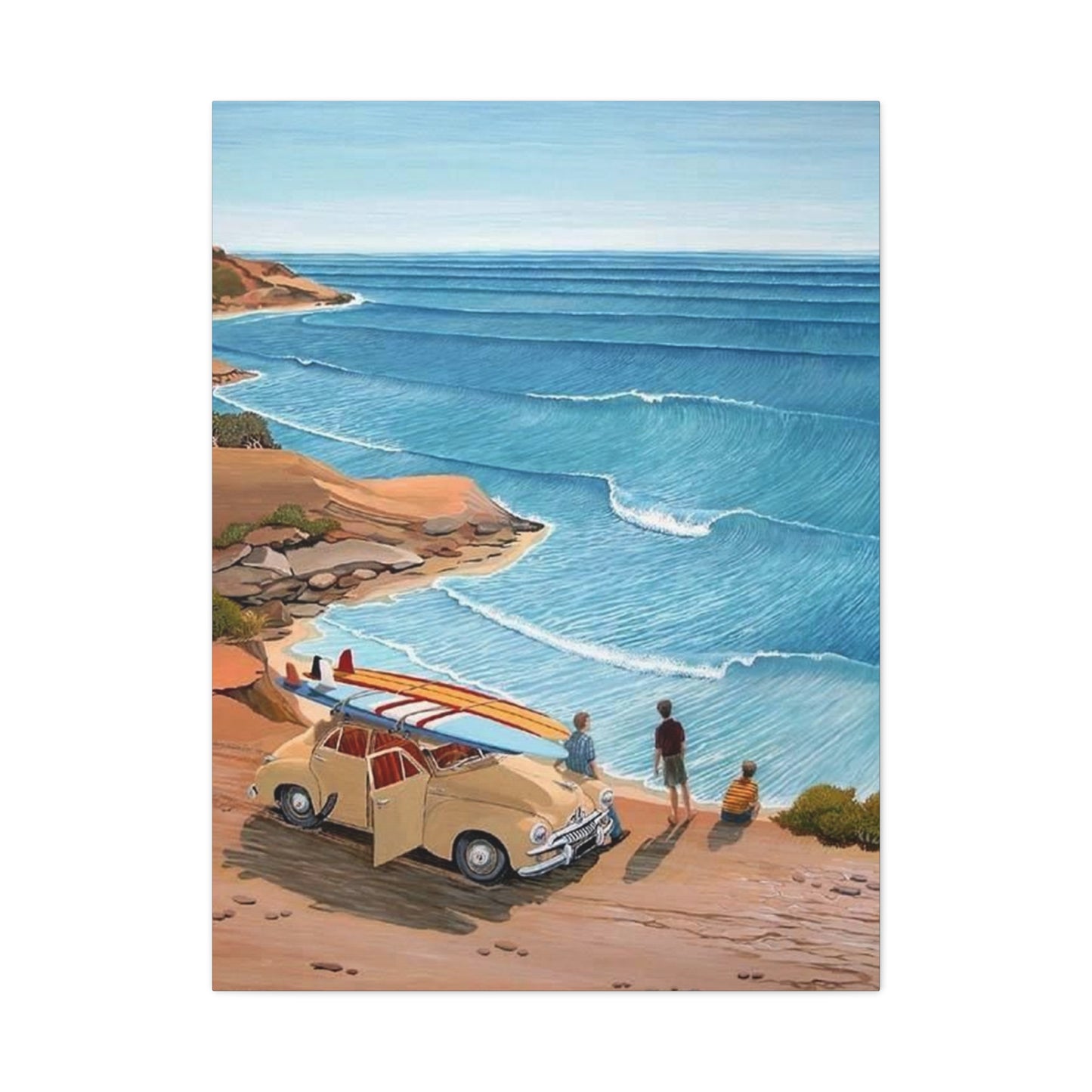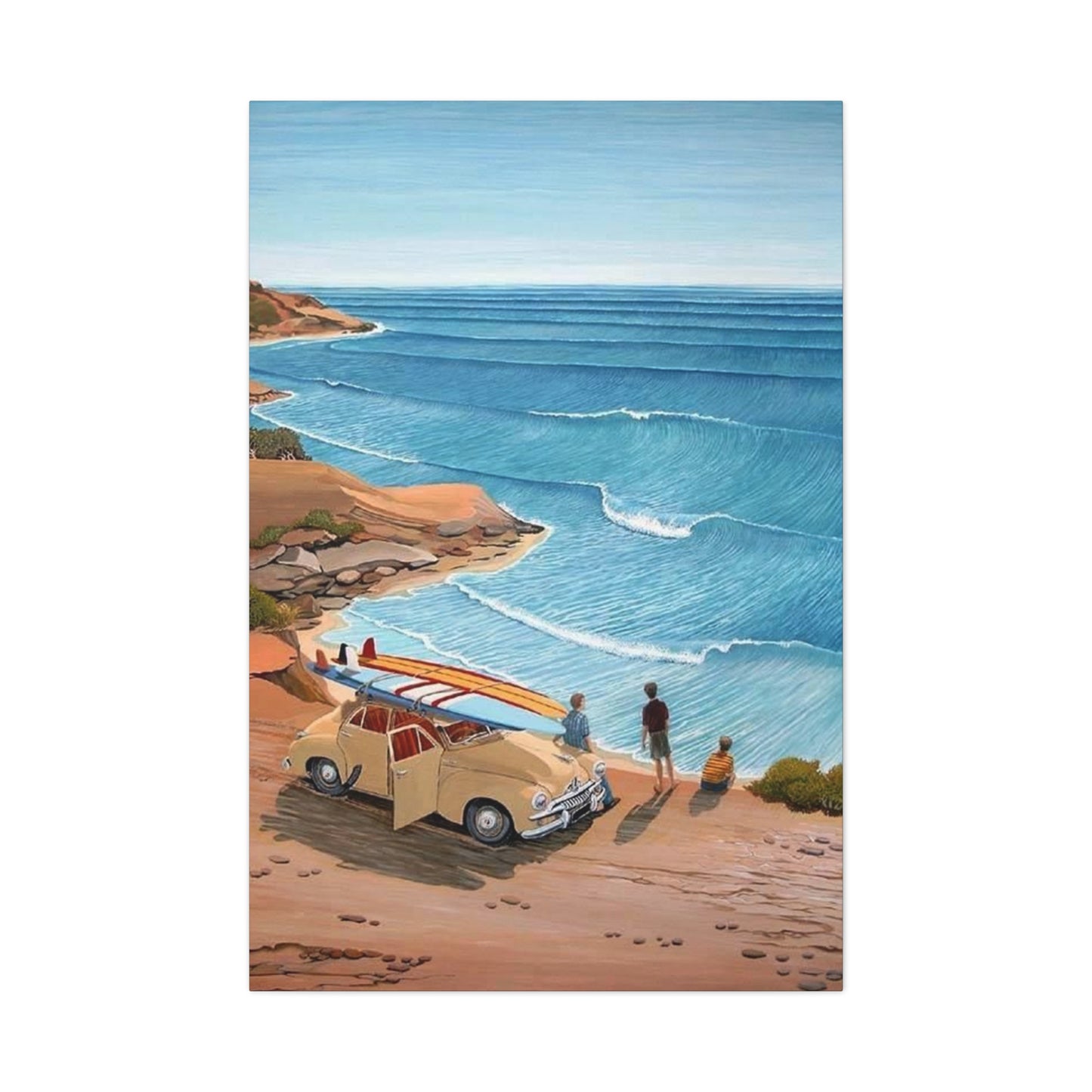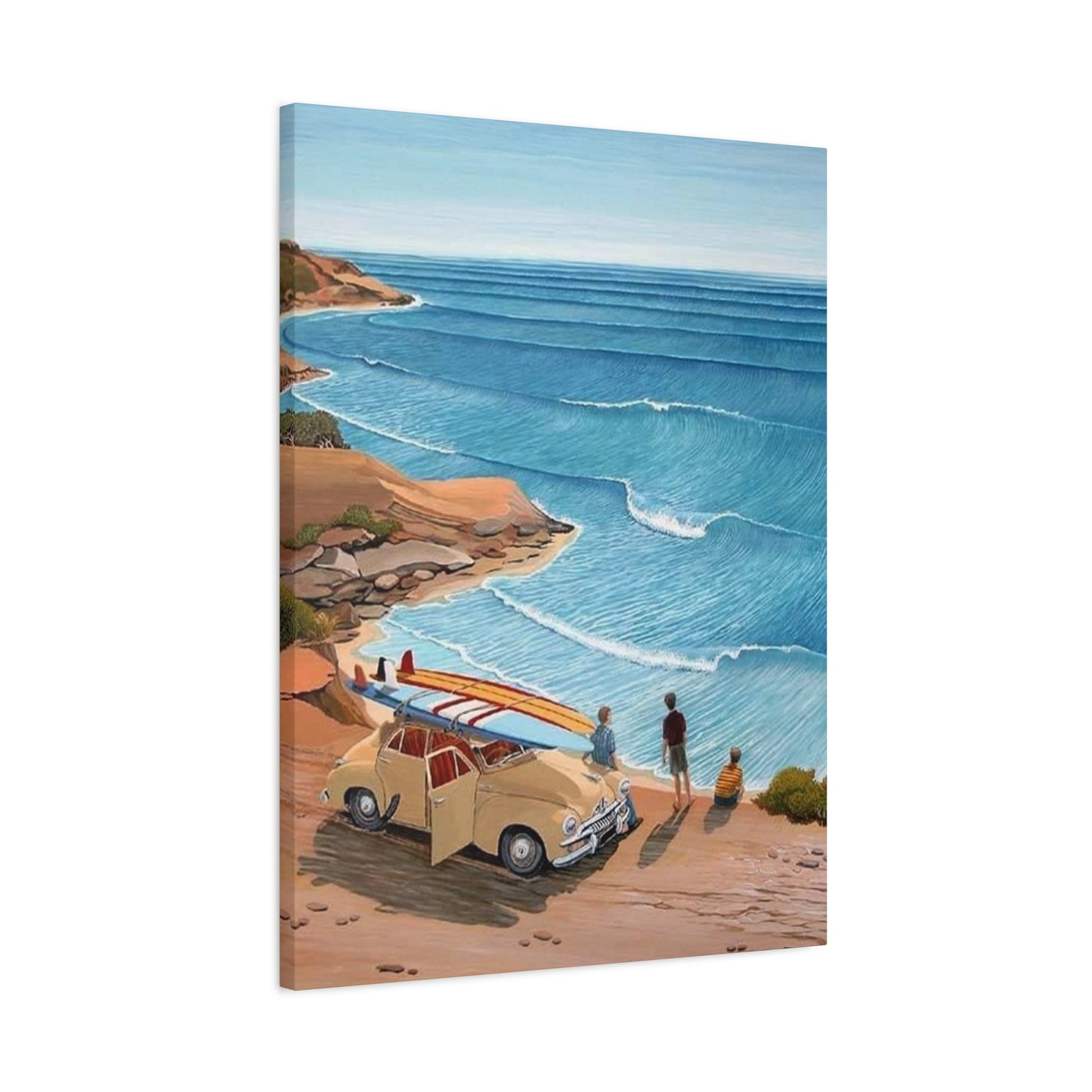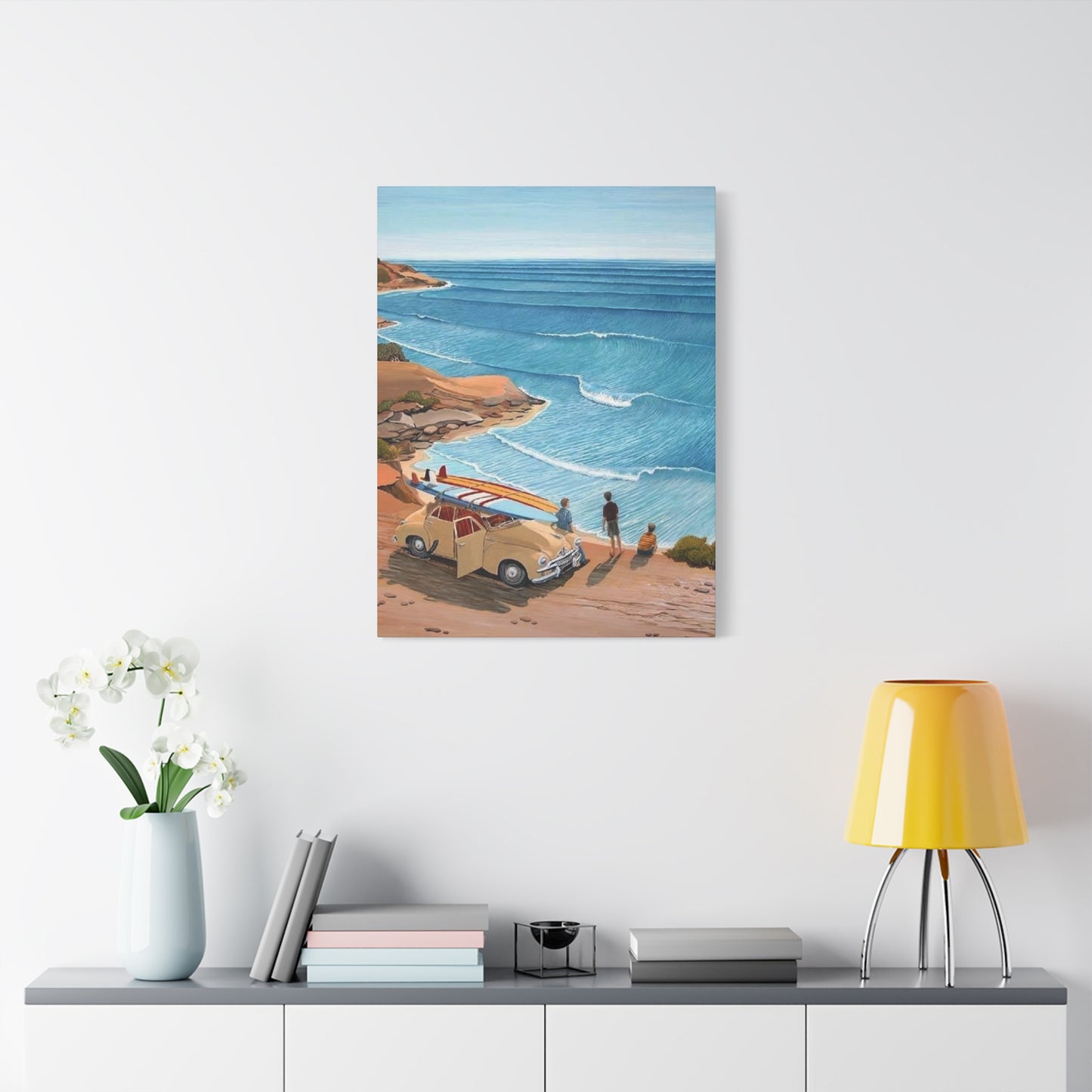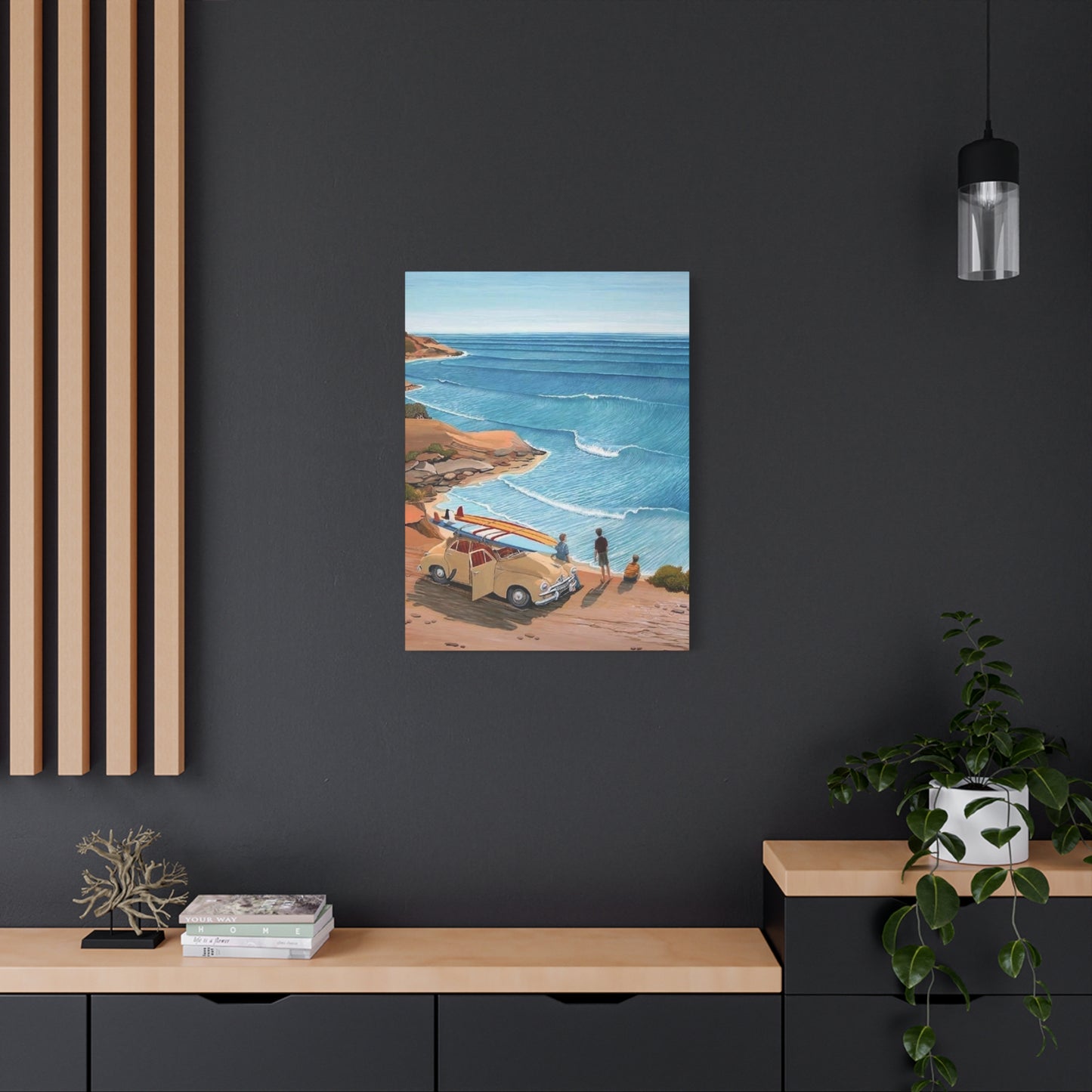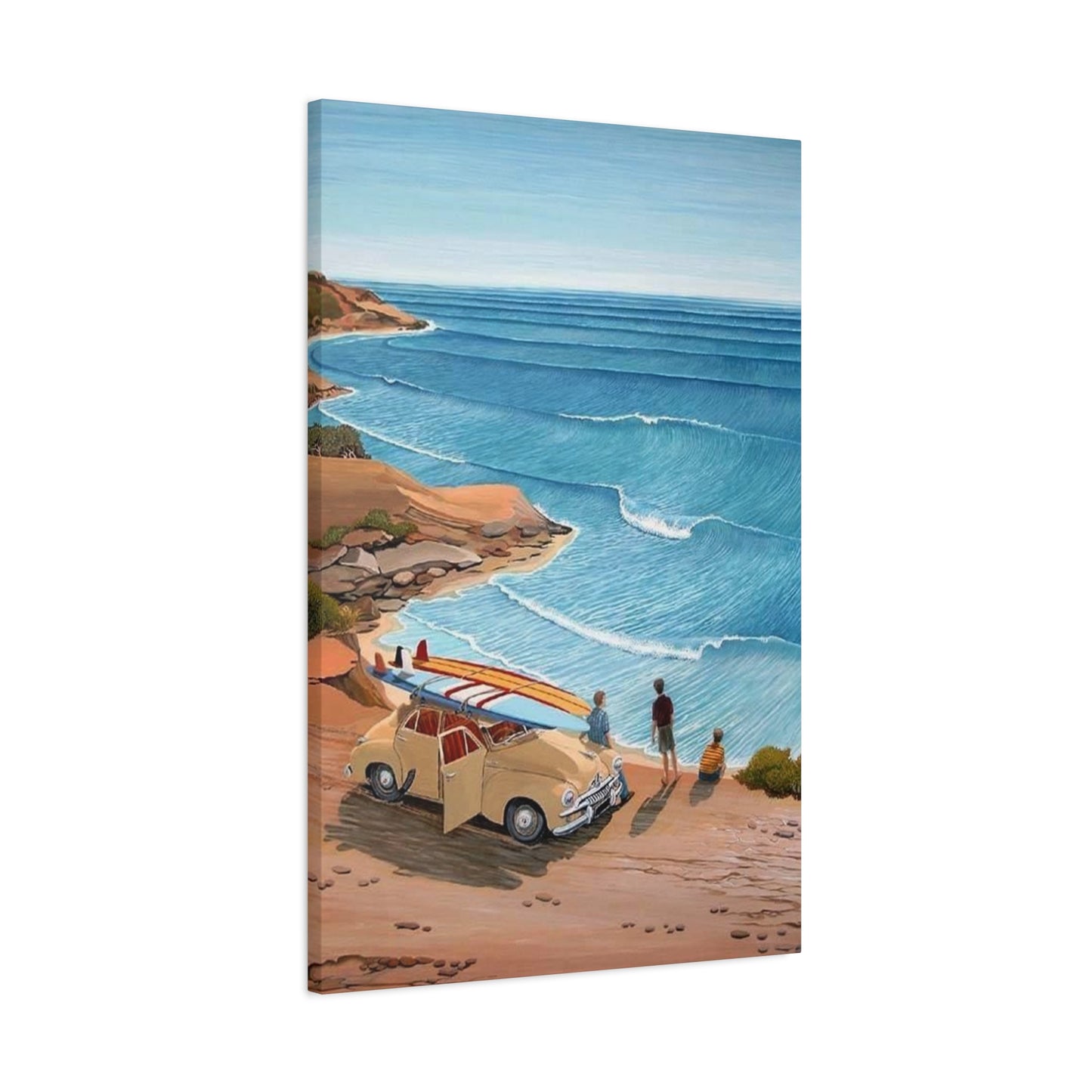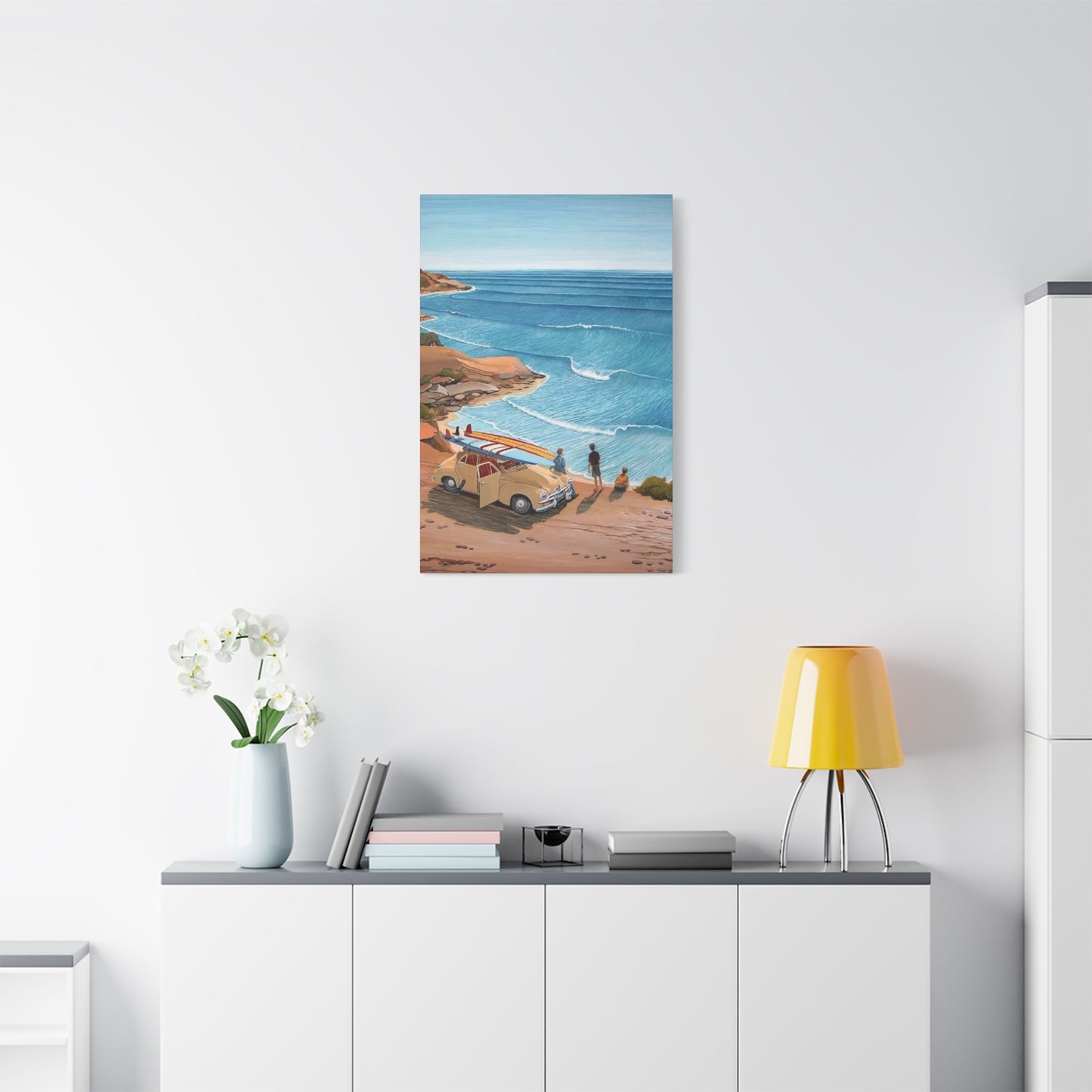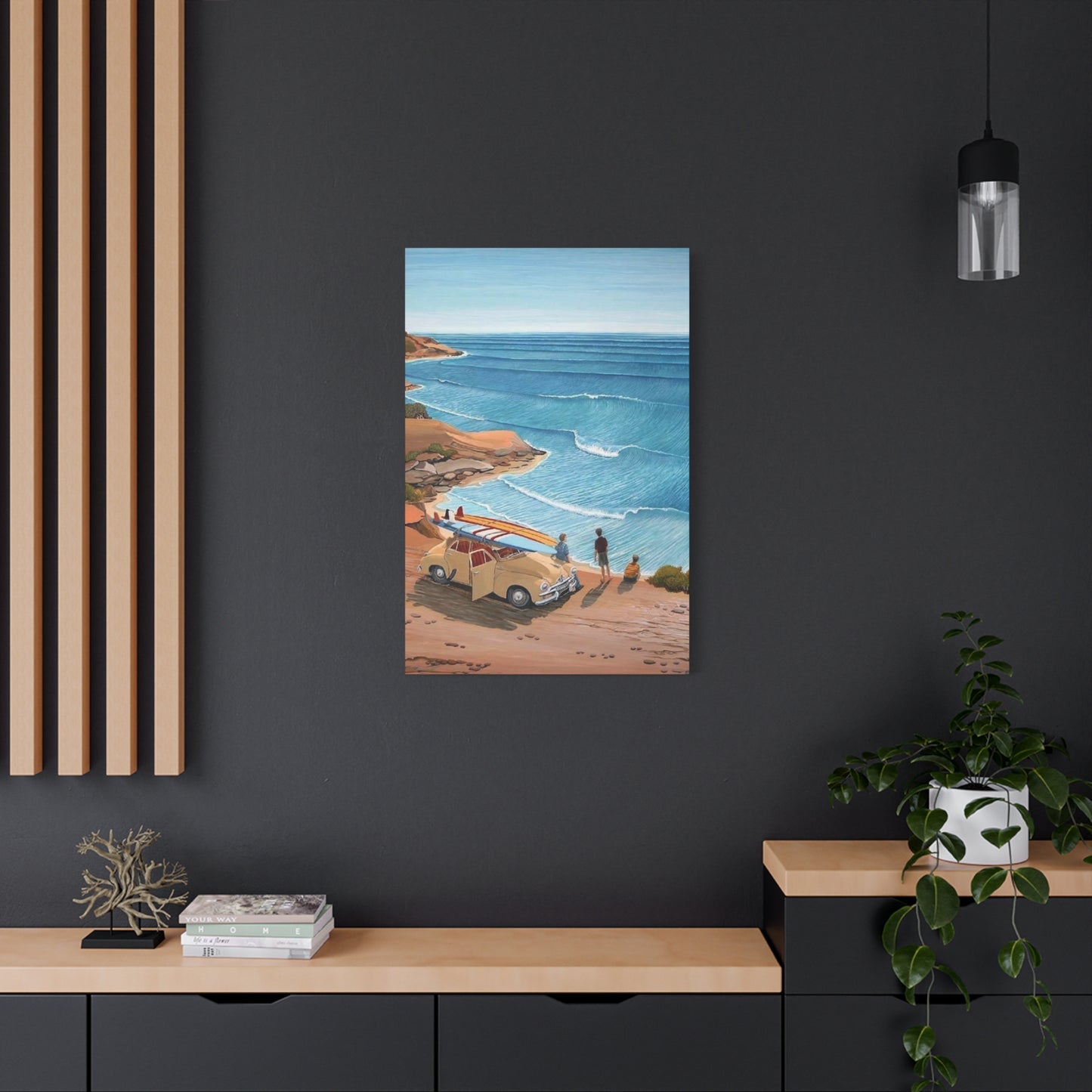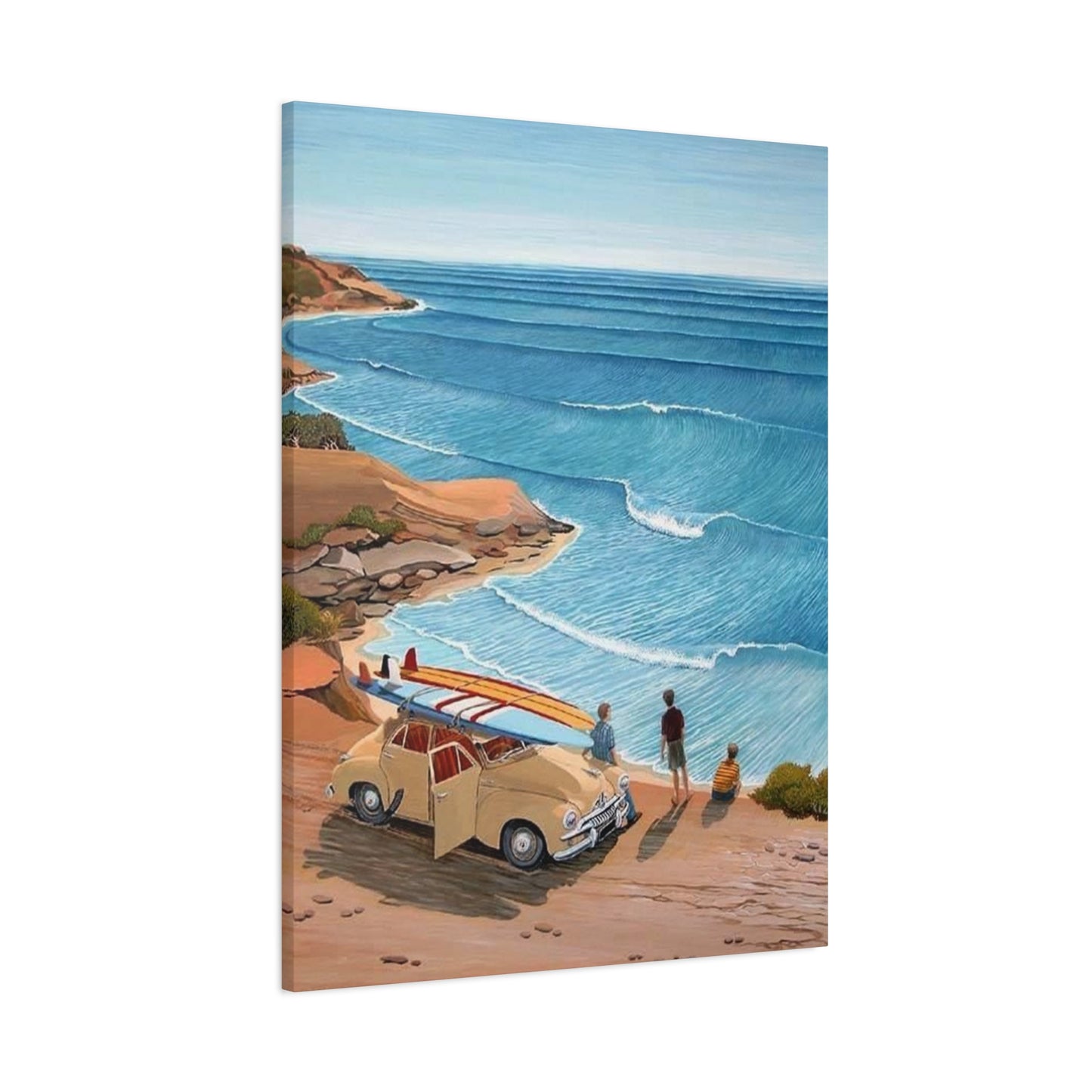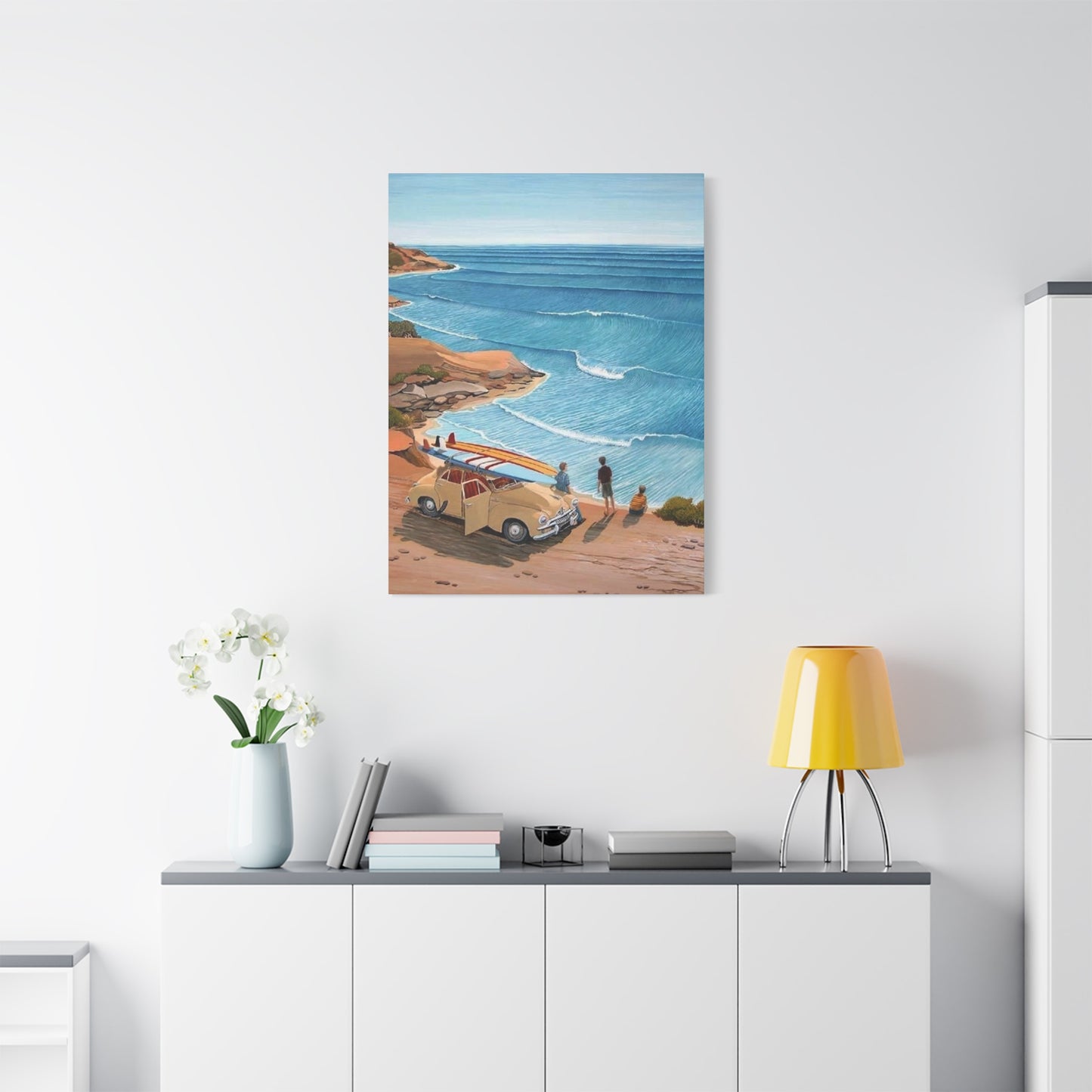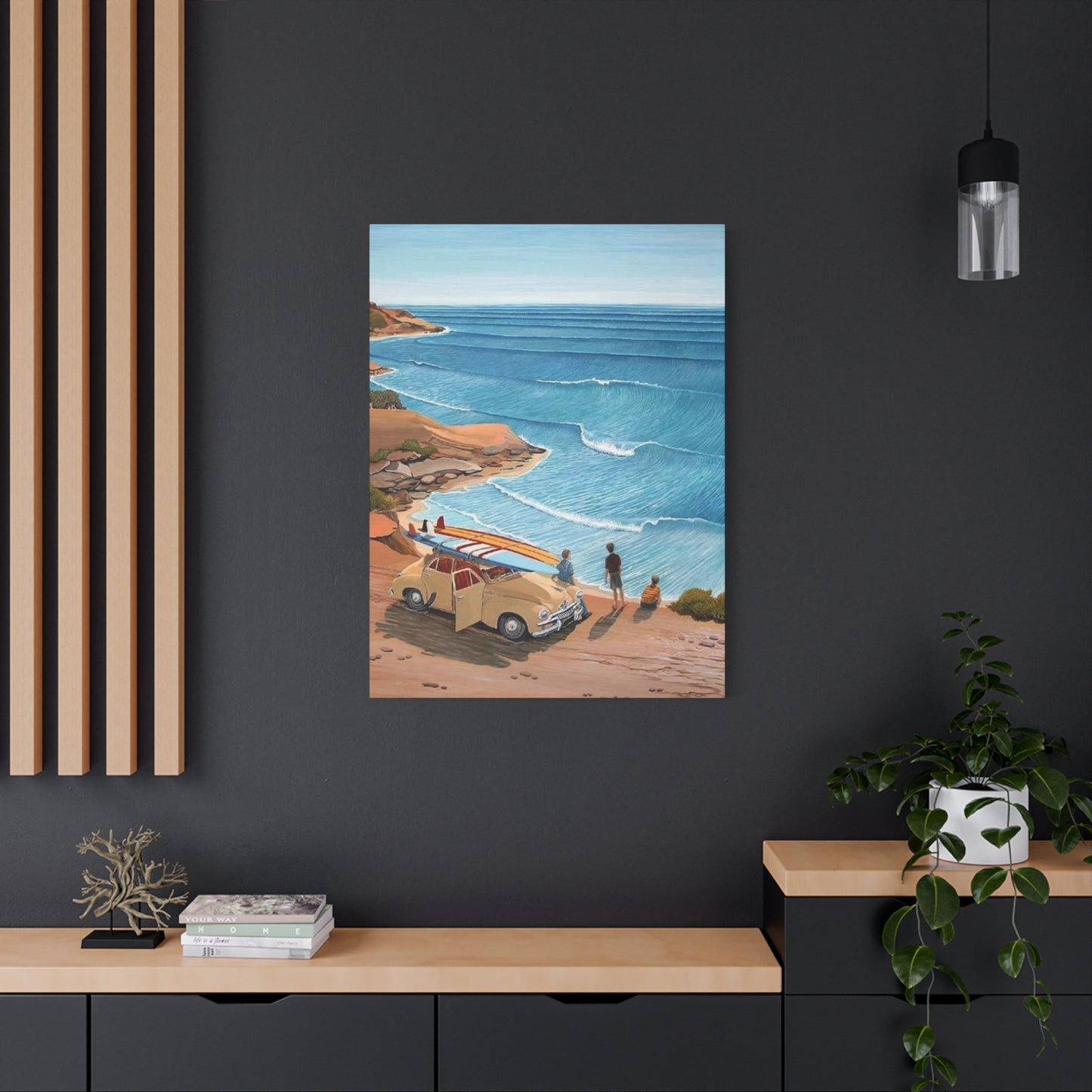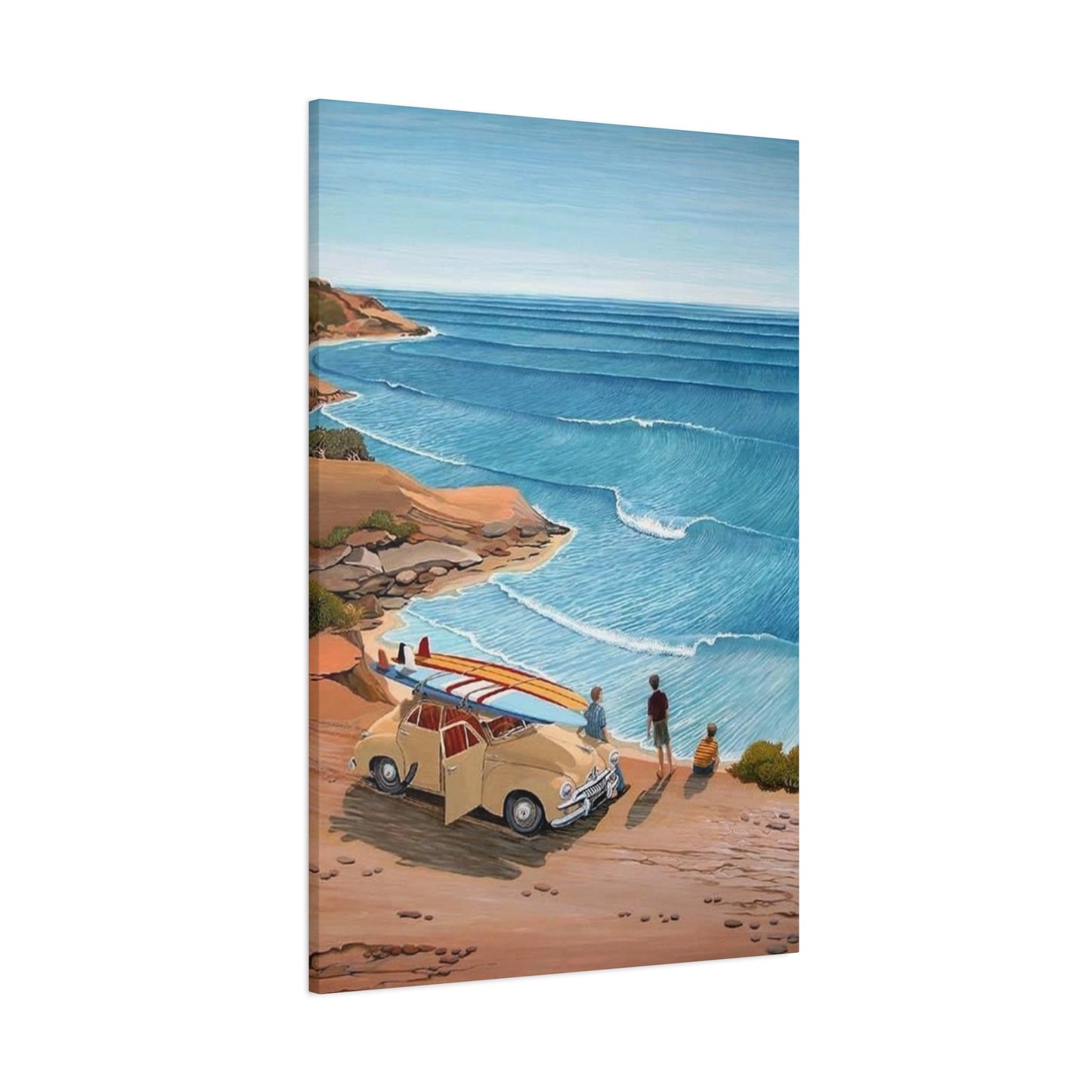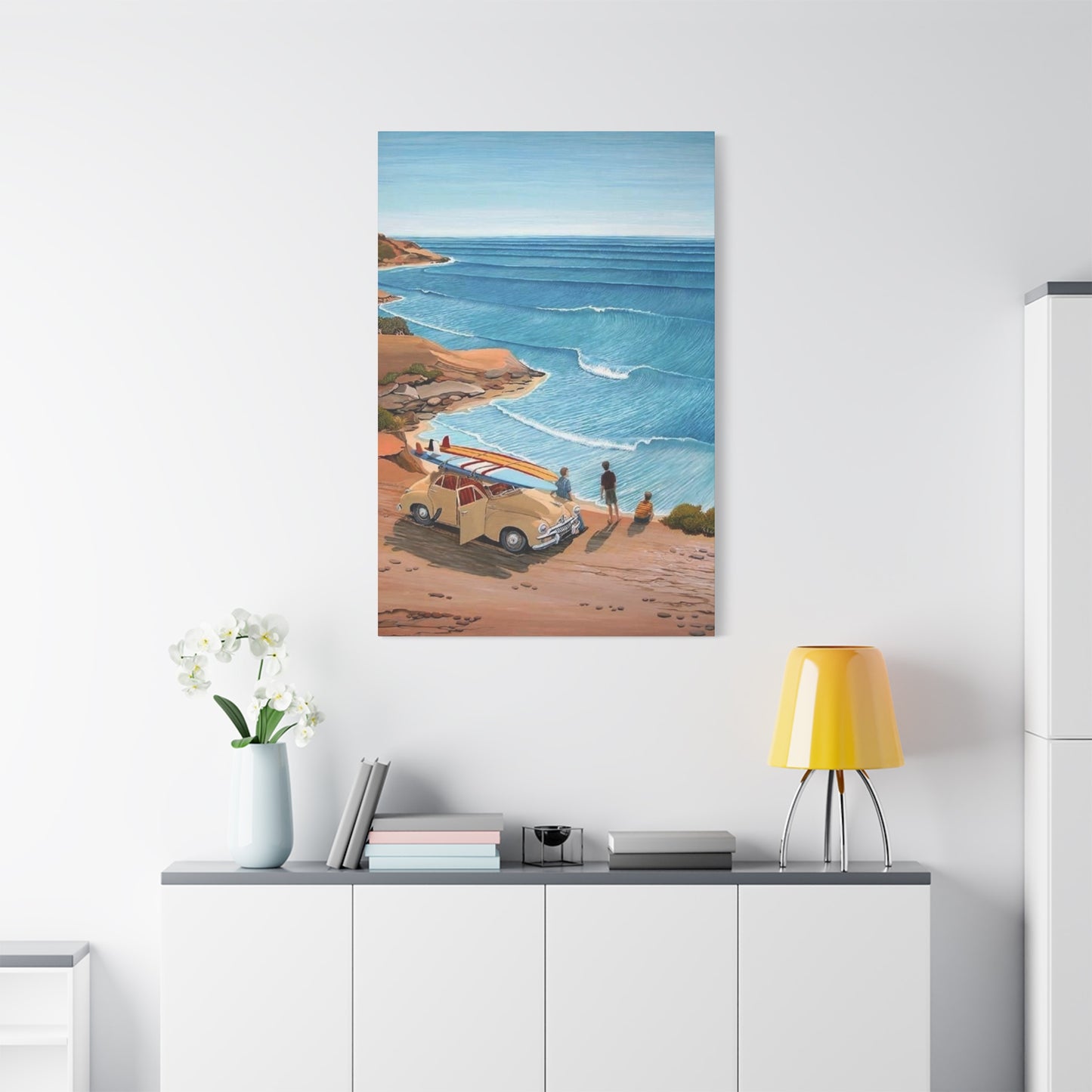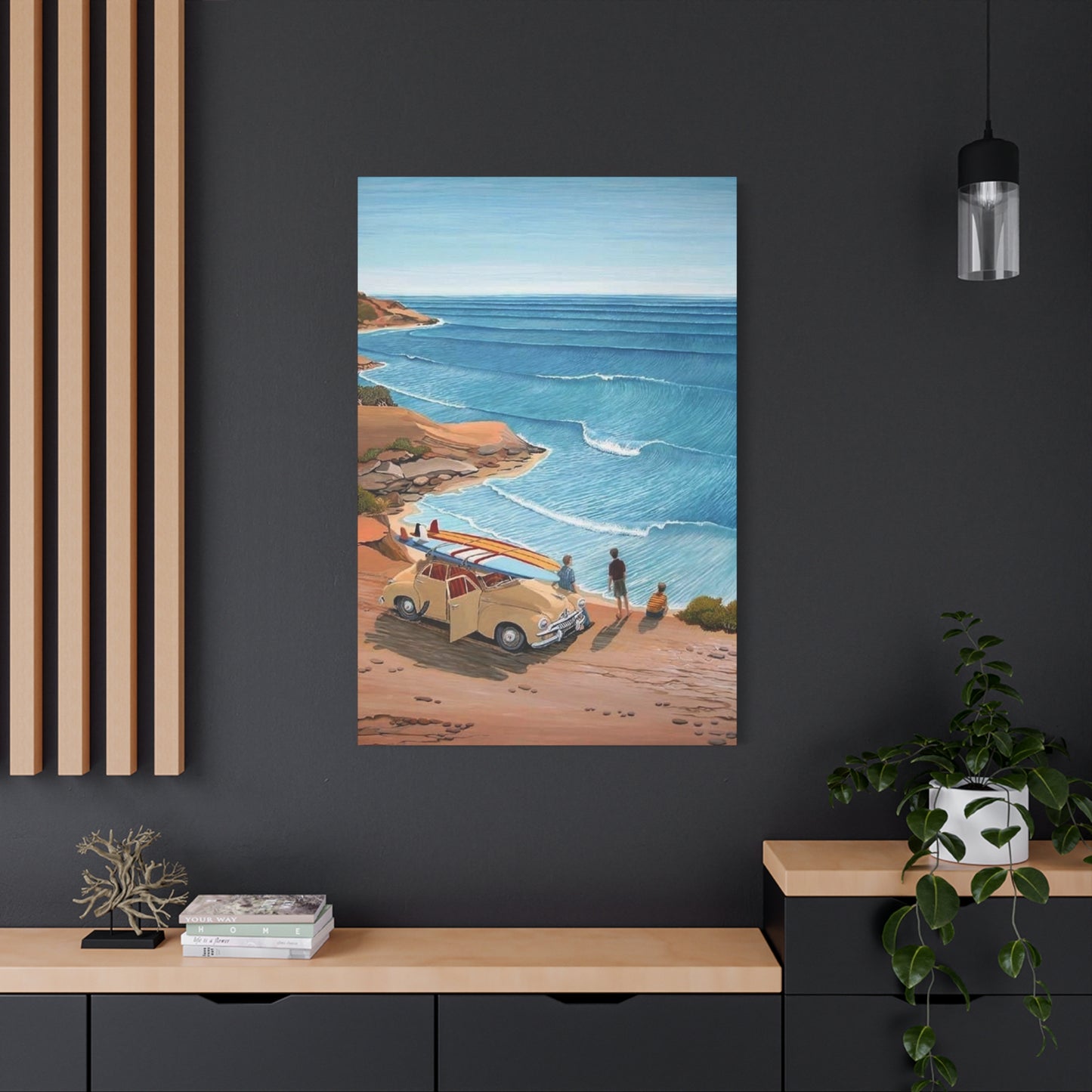Bringing Coastal Charm Home: Beach and Surf Poster Wall Art Ideas
The allure of coastal living extends far beyond sandy shores and crashing waves. Today's interior design enthusiasts are discovering the transformative power of surf-inspired wall art to create spaces that capture the essence of beach culture and ocean lifestyle. Whether you're decorating a beach house, urban apartment, or suburban home, incorporating surfing-themed artwork can instantly transport you to those carefree days spent riding waves and soaking up the sun.
Surf art has evolved from simple beach shack decorations to sophisticated design elements that work beautifully in contemporary and traditional settings alike. These pieces serve as more than mere decoration; they represent a lifestyle philosophy that values freedom, adventure, and connection with nature. The growing popularity of surf culture has made wave-inspired artwork increasingly sought after by collectors and casual decorators who want to infuse their spaces with coastal charm.
Modern surf art encompasses a wide range of styles, from photorealistic ocean scenes to abstract interpretations of wave movement. Artists working in this genre draw inspiration from various sources including vintage surfboard graphics, Hawaiian cultural motifs, California beach culture, and the natural beauty of coastal environments. This diversity means there's surf art suitable for every taste and interior design scheme.
The appeal of surfing wall art lies in its ability to evoke emotions and memories associated with ocean experiences. Even those who have never stepped on a surfboard can appreciate the sense of freedom and adventure these pieces convey. The visual elements common in surf art - flowing lines, dynamic movement, and ocean colors - create a calming yet energizing atmosphere that many people find irresistible.
When selecting surf-themed artwork for your space, consider how different styles and subjects can complement your existing decor while expressing your personal connection to ocean culture. The key is choosing pieces that resonate with your aesthetic preferences while maintaining the authentic spirit of surf culture that makes this art form so compelling.
Tropical Beach Surf Wall Art
Tropical beach surf wall art captures the exotic allure of pristine coastlines found in surfing destinations around the world. These pieces typically feature palm-fringed beaches, crystal-clear waters, and perfect waves that embody the dream of tropical surf adventures. The artwork often incorporates vibrant colors reminiscent of tropical sunsets, turquoise lagoons, and lush tropical vegetation that frames many legendary surf breaks.
Artists creating tropical surf art draw inspiration from renowned surfing locations such as Hawaii's North Shore, Indonesia's Mentawai Islands, the Maldives, and Central American beach breaks. These destinations offer not only world-class waves but also stunning natural backdrops that provide endless artistic inspiration. The resulting artwork often features a combination of realistic and stylized elements that capture both the physical beauty and the emotional impact of these special places.
The color palette used in tropical beach surf art typically includes warm oranges, deep corals, brilliant yellows, and various shades of blue and green that reflect the natural colors found in tropical environments. These warm tones create an inviting atmosphere that can make any room feel more welcoming and relaxed. The use of vibrant colors also helps these pieces serve as focal points in interior design schemes.
Many tropical surf art pieces incorporate cultural elements from the regions they depict. Hawaiian-inspired artwork might include traditional patterns, native plants, or references to local surf culture and traditions. Pieces inspired by other tropical locations might feature local architectural elements, indigenous flora and fauna, or regional surfboard designs that add authenticity and cultural depth to the artwork.
The subject matter in tropical beach surf art extends beyond just waves and surfers. Many pieces feature beach scenes with surfboards propped against palm trees, beachside surf shacks, outrigger canoes, and other elements that contribute to the tropical beach lifestyle. These additional elements help create more complete scenes that tell stories about the places and cultures that inspire the artwork.
Contemporary artists working in this style often experiment with different techniques to create unique interpretations of tropical surf themes. Some use traditional painting methods to create highly detailed, photorealistic scenes, while others employ mixed media approaches that might incorporate actual sand, shells, or other beach materials into their work. Digital artists are also creating stunning tropical surf art using advanced software tools that allow for incredible detail and color manipulation.
The versatility of tropical beach surf art makes it suitable for various interior design applications. Large canvas prints can serve as statement pieces in living rooms or bedrooms, while smaller pieces work well in bathrooms, offices, or as part of gallery walls. The warm, inviting nature of these pieces makes them particularly effective in spaces where relaxation and escape from daily stress are important.
When displaying tropical beach surf art, consider the existing color scheme of your space. These pieces work particularly well in rooms with neutral backgrounds that allow the vibrant tropical colors to stand out. Natural materials like bamboo frames or driftwood mounting can enhance the tropical aesthetic and create a more cohesive look.
Retro Surfboard Poster Designs
Retro surfboard poster designs celebrate the golden age of surf culture, drawing inspiration from the vintage advertisements, competition posters, and board graphics that defined surfing's early commercial period. These designs typically feature classic surfboard shapes, retro typography, and color schemes that evoke the 1960s through 1980s surf scene. The artwork often incorporates elements of pop art, advertising design, and vintage illustration techniques that give these pieces their distinctive nostalgic appeal.
The aesthetic of retro surf poster design is heavily influenced by the visual culture of California and Hawaii during surfing's mainstream emergence. During this period, surfboard manufacturers, surf shops, and event promoters created promotional materials that have become iconic representations of surf culture. These original designs featured bold graphics, stylized lettering, and imagery that emphasized the fun, rebellious spirit of surfing.
Color schemes in retro surfboard posters often reflect the design trends of their era. Pieces inspired by 1960s surf culture might use bright oranges, electric blues, and hot pinks that were popular during the psychedelic movement. 1970s-inspired designs often feature earth tones like burnt orange, avocado green, and chocolate brown, while 1980s-influenced pieces might incorporate neon colors and high-contrast combinations that defined that decade's aesthetic.
Typography plays a crucial role in retro surfboard poster design. Many pieces feature custom lettering styles that evoke specific time periods, from flowing script fonts reminiscent of 1960s psychedelic art to bold, geometric typefaces that define 1980s design. The integration of text and imagery in these posters often follows vintage advertising principles, creating compositions that are both visually striking and functionally clear.
Subject matter in retro surfboard posters ranges from simple board illustrations to complex scenes featuring surfers, beaches, and cultural elements from surfing's golden age. Some designs focus entirely on surfboard shapes and graphics, treating the board itself as both functional object and artistic subject. Others create complete scenes that might include vintage cars, beach parties, surf contests, or other elements that contribute to the nostalgic narrative.
Many contemporary artists creating retro surf posters study original vintage designs to understand the aesthetic principles and cultural context that made them effective. This research helps ensure that new works maintain authenticity while offering fresh interpretations of classic themes. Some artists even use vintage printing techniques or deliberately age their work to achieve the authentic look and feel of original period pieces.
The market for retro surfboard poster art includes both reproduction of actual vintage designs and new artwork created in vintage styles. Original vintage surf posters have become highly collectible, with rare pieces commanding significant prices at auction. This collector interest has encouraged artists to create new works that capture the spirit of vintage designs while offering more affordable options for decorators and surf culture enthusiasts.
Retro surfboard posters work particularly well in casual, comfortable spaces where their nostalgic charm can be fully appreciated. They're popular choices for beach houses, surf shops, casual restaurants, and personal spaces where owners want to celebrate surf culture history. The bold graphics and strong visual impact of these pieces make them excellent choices for spaces that need personality and character.
When incorporating retro surf posters into interior design, consider grouping multiple pieces to create gallery walls that tell a story about surf culture evolution. Mixing different eras and styles can create interesting visual conversations between pieces while maintaining the overall retro aesthetic. Framing choices can either emphasize the vintage nature of the artwork or provide contemporary contrast that makes the retro elements more prominent.
The enduring popularity of retro surfboard poster designs reflects a broader cultural appreciation for the craftsmanship and artistic vision of earlier design periods. In an age of digital design and mass production, the handcrafted quality and cultural authenticity of vintage-inspired surf art offers a refreshing alternative that celebrates both artistic skill and cultural heritage.
Surfer Silhouette Wall Prints
Surfer silhouette wall prints represent one of the most iconic and versatile forms of surf-inspired artwork. These pieces reduce the complexity of surfing scenes to their essential visual elements, creating powerful images that capture the grace, power, and beauty of surfing through simplified forms. The silhouette approach allows viewers to focus on the fundamental shapes and movements that define surfing while leaving room for personal interpretation and emotional connection.
The artistic power of silhouette imagery lies in its ability to convey motion and emotion through pure form. A well-crafted surfer silhouette can communicate the speed of a bottom turn, the concentration required for tube riding, or the graceful flow of carving across a wave face. By eliminating surface details and color variations, these images direct attention to the fundamental geometry of surfing movements and wave dynamics.
Surfer silhouette art often features dramatic contrasts between dark figures and bright backgrounds, creating images with strong visual impact. Common background treatments include vibrant sunset skies, gradient color washes, or simple white backgrounds that make the silhouetted figures pop. Some artists incorporate wave silhouettes alongside surfer figures, creating complete scenes that tell stories about the interaction between rider and ocean.
The subjects depicted in surfer silhouette prints cover the full spectrum of surfing activities and styles. Classic images might show a surfer in perfect trim position on a long, clean wave face, while more dynamic pieces could capture the explosive energy of aerial maneuvers or the split-second timing required for critical takeoffs. Some artists focus on specific surfing disciplines, creating silhouettes of longboarders, shortboarders, or stand-up paddle surfers that celebrate different approaches to wave riding.
Technical considerations play an important role in creating effective surfer silhouette artwork. Artists must carefully consider composition, proportion, and timing to capture moments that clearly communicate the intended action or emotion. The angle of view, the position of the surfer relative to the wave, and the overall balance of elements within the frame all contribute to the success of the final image.
Contemporary digital tools have expanded the possibilities for creating surfer silhouette art. Photographers can capture high-speed surfing action and then process images to create clean silhouettes with precise control over contrast and detail. Digital artists can combine multiple source images or create entirely original compositions that might be impossible to capture with traditional photography.
The monochromatic nature of silhouette art makes these pieces highly versatile for interior design applications. They work equally well in minimalist modern spaces and traditional decorating schemes. The strong graphic quality of silhouette images makes them excellent choices for spaces where visual impact is important but color coordination might be challenging.
Surfer silhouette prints are particularly effective when used in series or groupings that show progression of movement or different aspects of surfing culture. A series might follow a surfer through the complete sequence of catching and riding a wave, or compare different surfing styles and approaches. These multi-piece installations can create compelling visual narratives that engage viewers and encourage closer examination.
The emotional resonance of surfer silhouette art extends beyond simple decoration. For surfers, these images can evoke memories of perfect waves and magical sessions. For non-surfers, they represent freedom, adventure, and connection with natural forces that many people find inspiring. The universal appeal of these themes makes silhouette surf art accessible to a wide audience.
Color variations in surfer silhouette art often focus on background treatments rather than the silhouetted figures themselves. Sunset backgrounds might use warm oranges, reds, and yellows, while dawn sessions could feature cooler blues and purples. Some artists experiment with gradient backgrounds that shift from one color to another, creating subtle mood variations that enhance the emotional impact of the imagery.
The printing and production of surfer silhouette art has benefited from advances in digital printing technology. High-resolution prints can maintain clean, sharp edges that are essential for effective silhouette imagery, while various paper and canvas options allow for different textural qualities that can enhance the overall presentation of the artwork.
Ocean Wave Surf Posters
Ocean wave surf posters celebrate the raw power and natural beauty of waves themselves, often presenting them as the primary subject rather than focusing on surfers or surfing equipment. These pieces capture the dynamic energy, fluid motion, and incredible variety of wave formations that make surfing possible while showcasing the ocean as both playground and powerful natural force. The artwork ranges from realistic photographic representations to highly stylized artistic interpretations that emphasize the aesthetic and emotional qualities of wave energy.
The artistic challenge of depicting waves lies in capturing their constant motion and three-dimensional form on a static, two-dimensional surface. Successful wave art must convey the sense of movement, the play of light on water, and the scale and power that make waves so compelling to observe and ride. Artists working in this genre employ various techniques to suggest motion, from careful attention to wave lip curves and foam patterns to dynamic composition choices that guide the viewer's eye through the image.
Photographic wave posters often focus on specific aspects of wave behavior that surfers find most appealing. Barrel shots capture the perfect cylindrical formation of hollow waves, creating images that showcase both the geometric beauty and the dangerous power of these formations. Other photographers specialize in capturing the explosive energy of waves breaking against reefs or shorelines, creating dramatic images that emphasize the raw power of ocean forces.
Artistic interpretations of wave subjects allow for more creative freedom in color choice, composition, and style. Some artists use impressionistic techniques to suggest wave movement through brushwork and color blending, while others employ more graphic approaches that reduce waves to essential geometric forms. Abstract wave art might focus on color relationships and compositional dynamics rather than literal representation of wave structures.
The color palettes used in ocean wave surf posters vary dramatically depending on artistic intent and environmental conditions being depicted. Deep blue ocean waves might emphasize the power and depth of offshore waters, while turquoise and green tones could represent the shallow reef breaks popular with surfers. Storm wave imagery often incorporates grays and darker tones that convey the dangerous beauty of severe weather conditions.
Scale considerations play an important role in wave poster design. Large-format prints can create immersive experiences that make viewers feel surrounded by wave energy, while smaller pieces might focus on specific details like foam patterns or light refraction that showcase the intricate beauty found in wave dynamics. The choice of scale often depends on the intended display environment and the desired emotional impact.
Lighting conditions significantly affect the mood and visual impact of wave imagery. Golden hour lighting can transform ordinary waves into magical displays of color and form, while overcast conditions might emphasize the moody, powerful aspects of ocean energy. Some of the most striking wave posters capture unusual lighting conditions like storm light or underwater perspectives that offer unique viewpoints on familiar subjects.
Technical aspects of wave photography and illustration require deep understanding of ocean behavior and wave dynamics. Photographers must anticipate wave behavior to capture peak moments of formation and breaking, while artists must understand wave physics to create believable and compelling artistic interpretations. This technical knowledge often comes from personal experience in ocean environments.
The emotional impact of ocean wave surf posters extends beyond visual appreciation to tap into fundamental human responses to natural power and beauty. Many people find wave imagery both calming and energizing, reflecting the dual nature of ocean environments as places of both peace and power. This emotional resonance makes wave posters popular choices for spaces where people want to feel connected to natural environments.
Contemporary wave art often incorporates environmental themes, highlighting the beauty of ocean environments while sometimes addressing conservation concerns. Some artists use their wave imagery to promote ocean protection and awareness of marine environmental issues, adding layers of meaning to purely aesthetic considerations.
The market for ocean wave surf posters includes both fine art and commercial applications. High-end galleries showcase museum-quality wave photography and original paintings, while more affordable prints make wave art accessible to broader audiences. The commercial success of wave imagery reflects its broad appeal and its effectiveness in creating atmosphere in both residential and commercial spaces.
Beach & Surf Canvases
Minimalist beach and surf canvases represent a sophisticated approach to coastal artwork that emphasizes simplicity, clean lines, and subtle color relationships over complex scenes or detailed representations. This artistic style reduces beach and surf subjects to their essential elements, creating pieces that capture the essence of coastal experiences through careful attention to composition, color, and negative space. The minimalist approach allows these artworks to work seamlessly with contemporary interior design while maintaining their connection to surf culture and coastal lifestyle.
The philosophy behind minimalist surf art aligns with broader minimalist art movements that value simplicity, clarity, and emotional impact achieved through restraint rather than elaboration. In the context of surf and beach themes, this might mean representing a wave with a single curved line, suggesting a beach scene through subtle color gradations, or capturing the feeling of ocean space through large areas of carefully chosen color.
Color relationships play a crucial role in minimalist beach and surf canvases. Artists working in this style often limit their palettes to two or three colors that capture specific aspects of coastal environments. A piece might use only various shades of blue to suggest ocean depth and sky, or combine sandy beiges with ocean blues to evoke beach experiences. The limited color palette forces viewers to focus on subtle variations and relationships that might be overlooked in more complex compositions.
Geometric approaches to minimalist surf art often reduce wave forms to essential curves and lines that suggest movement and energy without literal representation. These pieces might feature simple arc shapes that echo wave movements, horizontal bands that suggest horizon lines, or geometric forms that capture the basic structure of coastal landscapes. The geometric reduction allows these pieces to function as abstract art while maintaining their connection to surf and beach themes.
Texture considerations in minimalist beach canvases often involve subtle surface treatments that add depth and interest without compromising the overall simplicity of the composition. Artists might use slight impasto techniques to suggest foam patterns, incorporate sand or other natural materials into paint mixtures, or employ various brushwork techniques that create surface variation while maintaining clean, simple overall forms.
The scale of minimalist beach and surf canvases can vary dramatically while maintaining effectiveness. Large-scale pieces can create immersive experiences that surround viewers with subtle coastal atmospheres, while smaller works might serve as quiet focal points that add coastal character without overwhelming other design elements. The scalability of minimalist approaches makes these pieces versatile for various interior applications.
Negative space utilization is particularly important in minimalist beach art. The areas where nothing is depicted often carry as much visual weight as the areas where elements are present. A minimalist beach scene might use large areas of white or pale color to suggest sand, sky, or water, with small elements providing just enough information to establish the coastal context.
Contemporary interior design trends have increased appreciation for minimalist approaches to all subjects, including surf and beach themes. These pieces work particularly well in modern and contemporary spaces where clean lines and uncluttered aesthetics are valued. The subtlety of minimalist coastal art allows it to provide atmosphere and character without competing with architectural elements or furniture.
The emotional impact of minimalist beach and surf canvases often relies on viewers' own experiences and memories to complete the artistic statement. By providing just enough visual information to establish context, these pieces invite personal interpretation and emotional connection. This participatory aspect makes minimalist coastal art particularly effective for personal spaces where individual response is more important than universal appeal.
Production considerations for minimalist beach canvases often emphasize quality of materials and execution rather than complexity of technique. The simplicity of these compositions means that every element must be perfectly executed, as there are fewer places to hide imperfections. High-quality canvas, paints, and printing processes become particularly important for maintaining the clean, sophisticated appearance that defines effective minimalist art.
The versatility of minimalist beach and surf canvases extends to their ability to work in groupings or series. Multiple pieces can be combined to create larger installations while maintaining the clean, uncluttered aesthetic that defines minimalist approaches. Series might explore subtle variations in color, form, or composition while maintaining overall coherence.
Market reception for minimalist beach and surf art reflects broader trends in contemporary art and interior design. Collectors and decorators increasingly appreciate artwork that provides atmosphere and emotional resonance without visual complexity or bold statements. This trend has created opportunities for artists working in minimalist styles to reach audiences who might be intimidated by more complex or bold artistic approaches.
Sunset Surfing Wall Art
Sunset surfing wall art captures one of the most magical and photogenic times for ocean activities, when golden light transforms ordinary beach scenes into extraordinary visual experiences. These pieces combine the dynamic action of surfing with the spectacular color displays and atmospheric effects that occur during the golden hour, creating artwork that celebrates both the sport of surfing and the natural beauty of coastal environments. The warm, inviting colors and dramatic lighting conditions typical of sunset imagery make these pieces particularly effective for creating welcoming, inspiring interior atmospheres.
The technical challenges of creating effective sunset surfing art involve balancing the dramatic lighting conditions with clear representation of surfing action. Artists must carefully manage the high contrast between bright sky areas and darker water and figure silhouettes while maintaining enough detail to convey the grace and skill involved in surfing. This often requires sophisticated understanding of light behavior and careful attention to composition and color relationships.
Photographic approaches to sunset surfing art often involve split-second timing to capture perfect moments when wave action, surfer position, and lighting conditions align to create compelling images. Photographers working in this genre must understand both surfing dynamics and natural lighting patterns to anticipate and capture peak moments. The best sunset surf photography combines technical expertise with artistic vision to create images that transcend simple documentation.
Color palettes in sunset surfing artwork typically feature the warm tones associated with golden hour lighting: oranges, reds, yellows, and purples that gradually transition across sky areas. The interaction between these warm sky colors and the cooler blues and greens of ocean water creates natural color harmony that many people find particularly appealing. Artists often emphasize these color relationships to enhance the emotional impact of their work.
Silhouette effects are commonly used in sunset surfing art, as the strong backlighting naturally creates dramatic contrasts between dark figures and bright backgrounds. These silhouette effects can emphasize the graceful movements of surfing while allowing the spectacular colors of sunset skies to dominate the composition. The combination of dynamic human forms against colorful skies creates powerful visual statements about the relationship between humans and nature.
Artistic interpretations of sunset surfing subjects allow for creative freedom in color enhancement and compositional choices. Some artists push sunset colors beyond realistic representation to create more dramatic or emotional effects, while others focus on capturing the subtle color variations and atmospheric effects that make real sunsets so compelling. The artistic license available with sunset subjects allows for both realistic and highly stylized approaches.
The emotional associations connected with sunset surfing imagery contribute significantly to the popularity of this art form. Sunsets represent endings, reflection, and peaceful conclusion to active days, while surfing represents freedom, skill, and connection with nature. The combination of these themes creates artwork that resonates with people's desires for both adventure and tranquility.
Contemporary sunset surfing art often incorporates multiple figures or sequential action to tell more complete stories about surfing experiences. Some pieces show groups of surfers sharing waves during golden hour sessions, while others might capture the progression of a single surfer through various maneuvers as sunset light changes. These narrative approaches add depth and interest beyond simple single-moment captures.
The market appeal of sunset surfing wall art extends beyond surf culture enthusiasts to include anyone who appreciates natural beauty and outdoor activities. The universal appeal of sunset imagery combined with the aspirational qualities of surfing creates artwork that works in various interior contexts, from beach houses to urban apartments where residents dream of coastal escapes.
Production considerations for sunset surfing art often emphasize color accuracy and dynamic range to maintain the impact of the original lighting conditions. High-quality printing processes and color-calibrated displays become particularly important for reproducing the subtle color gradations and dramatic contrasts that define effective sunset imagery.
Display considerations for sunset surfing wall art often involve strategic placement where natural light can enhance the warm colors and create changing visual effects throughout the day. These pieces work particularly well in spaces where people gather during evening hours, as the artwork can complement and extend the natural sunset experience.
The seasonal and geographic variations in sunset conditions provide endless inspiration for artists working in this genre. Different coastal locations offer unique combinations of weather patterns, atmospheric conditions, and landscape features that create distinctive sunset characteristics. This geographic diversity allows for extensive exploration of sunset surfing themes while maintaining freshness and variety.
Surf Culture Poster Wall Decor
Surf culture poster wall decor encompasses the broader lifestyle, philosophy, and community aspects of surfing that extend far beyond the simple act of riding waves. These artworks celebrate the rich cultural traditions, social customs, and lifestyle elements that have developed around surfing communities worldwide. From depicting beach gatherings and surf contests to showcasing the laid-back lifestyle and environmental consciousness that characterize surf culture, these posters tell stories about the people and communities that make surfing more than just a sport.
The historical development of surf culture poster art traces back to the early commercialization of surfing, when surf shops, contest organizers, and lifestyle brands began creating promotional materials that captured the spirit and values of surfing communities. These early posters established visual conventions and thematic approaches that continue to influence contemporary surf culture artwork. The evolution of this art form reflects changes in surfing itself, from its origins in Hawaiian culture through its California beach culture development to its current global reach.
Subject matter in surf culture posters extends well beyond surfing action to include beach lifestyle scenes, surf shop interiors, contest gatherings, beach parties, and other social aspects of surfing communities. Some pieces focus on the equipment and accessories associated with surfing, from vintage wooden boards to modern high-tech gear. Others might depict the environmental settings where surf culture thrives, including beach towns, surf breaks, and the natural environments that surfers work to protect.
The aesthetic approaches used in surf culture poster design vary widely, reflecting the diverse influences and artistic traditions that contribute to surfing's visual culture. Some pieces employ retro graphic design elements that echo vintage advertising and promotional materials, while others use contemporary design approaches that reflect current trends in poster and graphic design. The variety of aesthetic approaches ensures that surf culture posters can complement various interior design styles and personal tastes.
Typography and text elements play important roles in many surf culture posters, often incorporating surf-specific language, location names, or philosophical statements that resonate with surf community values. The integration of text and imagery in these pieces often follows design principles that emphasize readability while maintaining strong visual impact. Some posters feature minimal text that allows imagery to dominate, while others use text as a primary design element.
Contemporary surf culture poster artists often draw inspiration from various sources including vintage surf magazines, contest photography, lifestyle documentation, and personal experiences within surfing communities. This diverse inspiration base results in artwork that captures authentic aspects of surf culture while offering fresh perspectives and artistic interpretations. Many artists working in this genre are themselves part of surfing communities, bringing insider knowledge and authentic perspective to their work.
The global nature of contemporary surf culture provides rich material for poster artists, who can draw inspiration from surfing communities around the world. Different geographic regions have developed distinct cultural characteristics and aesthetic approaches that provide unique material for artistic exploration. This geographic diversity ensures that surf culture poster art remains fresh and varied while maintaining connections to universal themes that define surfing lifestyle.
Environmental themes frequently appear in surf culture poster art, reflecting the strong environmental consciousness that characterizes many surfing communities. These pieces might celebrate pristine natural environments, promote ocean conservation, or highlight the relationship between healthy ecosystems and quality surfing experiences. The environmental focus adds depth and meaning to surf culture artwork beyond simple lifestyle celebration.
The commercial applications of surf culture poster art include use in surf shops, restaurants, hotels, and other businesses that want to connect with surf culture aesthetics and values. These commercial uses help support artists while spreading surf culture imagery to broader audiences. The commercial success of surf culture poster art reflects its effectiveness in communicating lifestyle values and creating atmosphere in various settings.
Display strategies for surf culture posters often involve grouping multiple pieces to create comprehensive visual statements about surf lifestyle and values. Gallery walls featuring various aspects of surf culture can tell complete stories about community life, environmental values, and lifestyle philosophy. The narrative potential of grouped surf culture posters makes them particularly effective for spaces where storytelling and atmosphere creation are important goals.
The collecting and appreciation of surf culture poster art has developed its own communities and market dynamics. Original vintage surf posters have become highly collectible, while contemporary artists continue to create new works that capture current aspects of surf culture while honoring historical traditions. This collecting activity helps preserve surf culture history while supporting contemporary artistic production.
Abstract Surf Wave Posters
Abstract surf wave posters interpret the energy, movement, and emotional essence of wave experiences through non-literal artistic approaches that emphasize color, form, and composition over realistic representation. These artworks capture the fundamental qualities that make waves compelling - their dynamic motion, powerful energy, and fluid beauty - while freeing artists from the constraints of literal accuracy. The abstract approach allows for creative exploration of wave themes that can result in highly original and emotionally powerful artwork that resonates with surf culture while appealing to broader artistic sensibilities.
The artistic philosophy behind abstract wave interpretation often focuses on translating the physical and emotional experience of waves into visual language that can be appreciated by viewers regardless of their surfing experience. Artists working in this style might use flowing lines to suggest wave movement, color gradations to represent depth and power, or geometric forms to capture the structural aspects of wave behavior. The goal is often to create artwork that evokes the feeling of being around waves rather than simply showing what waves look like.
Color theory plays a particularly important role in abstract surf wave artwork, as artists often rely on color relationships and interactions to convey mood, energy, and movement. Ocean-inspired palettes might range from deep navy blues and teals to lighter aqua and turquoise tones, often combined with white foam colors and sometimes earth tones that represent beach and shore elements. Some artists push beyond realistic color choices to explore emotional or symbolic color relationships that enhance the expressive potential of their work.
Movement representation in abstract wave posters often involves dynamic compositional elements that guide the viewer's eye through the artwork in ways that suggest wave motion and energy. Curved lines, diagonal compositions, and flowing forms can create visual rhythms that echo the natural rhythms of wave behavior. Some artists use gestural brushwork or other mark-making techniques that capture the spontaneous, ever-changing nature of wave formations.
Textural approaches to abstract wave art might incorporate techniques that suggest the physical qualities of water and foam without literal representation. Smooth, flowing areas might represent the sleek surface of unbroken waves, while more chaotic or turbulent textures could suggest the explosive energy of breaking waves or the complex foam patterns that result from wave action. These textural variations add visual interest and tactile qualities that enhance viewer engagement.
The scale considerations in abstract wave artwork can dramatically affect viewer response and interpretation. Large-scale pieces can create immersive experiences that surround viewers with wave energy, while smaller works might function as meditative focal points that invite contemplation. The abstract nature of these pieces often makes them more scalable than realistic artwork, as the non-literal approach can work effectively at various sizes.
Contemporary digital art tools have expanded the possibilities for creating abstract wave artwork, allowing artists to experiment with effects, layering, and color manipulation that would be difficult or impossible to achieve with traditional media. Digital artists can create flowing, organic forms that suggest wave movement while incorporating complex color interactions and textural effects. The flexibility of digital tools allows for extensive experimentation and revision during the creative process.
The emotional impact of abstract surf wave posters often depends on their ability to tap into viewers' subconscious responses to natural forces and movements. The flowing, dynamic qualities typical of this artwork can create feelings of calm, energy, or excitement depending on specific artistic choices and individual viewer responses. This emotional accessibility makes abstract wave art appealing to people who might not be drawn to more literal surf-themed artwork.
Compositional approaches to abstract wave art vary widely among artists, with some favoring organic, free-flowing compositions that emphasize natural movement and others preferring more structured approaches that use geometric elements to suggest wave behavior. The choice of compositional strategy often reflects individual artistic philosophy and intended emotional effect. Some artists combine both approaches to create complex, layered compositions that work on multiple visual levels.
The versatility of abstract surf wave posters in interior design applications stems from their ability to provide ocean-inspired atmosphere without requiring specific thematic coordination. These pieces can work in various settings where ocean connections are desired but where literal surf imagery might be inappropriate or overwhelming. The abstract approach allows these artworks to function as both decorative elements and conversation pieces.
Market reception for abstract surf wave art reflects broader trends in contemporary art that value personal expression and emotional resonance over literal representation. Collectors and decorators often appreciate the unique qualities that individual artists bring to wave interpretation, as the abstract approach allows for distinctive personal styles that distinguish one artist's work from another. This individuality makes abstract wave art particularly appealing to people who value artistic originality.
Surfboard on the Beach Prints
Surfboard on the beach prints capture the iconic imagery of surfboards positioned against beach backdrops, creating compositions that celebrate both the functional beauty of surfboard design and the environmental contexts where surfing takes place. These artworks often focus on the surfboard as both functional equipment and design object, showcasing the craftsmanship, graphics, and aesthetic qualities that make surfboards compelling subjects for artistic interpretation. The beach setting provides natural context while adding compositional elements that enhance the overall visual appeal of these pieces.
The artistic appeal of surfboard subjects lies in their unique combination of functional design and aesthetic beauty. Surfboards represent sophisticated engineering solutions to the challenge of riding waves, but they also serve as canvases for artistic expression through shape design, color choices, and graphic applications. Artists creating surfboard-focused artwork often appreciate both the technical and aesthetic aspects of board design, creating pieces that celebrate the craftsmanship and creativity involved in surfboard production.
Beach environments provide rich compositional opportunities for surfboard artwork, offering various textural elements, lighting conditions, and color relationships that can enhance the visual impact of surfboard subjects. Sand textures, driftwood, beach vegetation, and rock formations can all serve as compositional elements that complement the clean lines and designed surfaces of surfboards. The interaction between manufactured surf equipment and natural beach environments creates interesting visual contrasts that many artists find compelling.
Historical perspectives on surfboard design provide extensive material for artistic exploration, as board shapes, construction methods, and graphic styles have evolved dramatically throughout surfing history. Vintage longboards, classic single-fins, experimental designs from various eras, and contemporary high-performance boards all offer different aesthetic qualities and cultural associations that artists can explore. This historical depth allows for artwork that celebrates surfing's evolution while showcasing the enduring appeal of well-designed surf equipment.
The photographic challenges involved in capturing effective surfboard on beach images require attention to lighting, composition, and environmental conditions. Photographers must consider how natural lighting affects both the surfboard surfaces and the beach environment, often working during golden hour or other optimal lighting conditions to achieve the best results. The positioning of boards relative to environmental elements requires careful consideration to create balanced, visually appealing compositions.
Artistic interpretations of surfboard beach scenes allow for creative freedom in color enhancement, stylistic approach, and compositional arrangement. Some artists focus on realistic representation that celebrates the actual appearance of boards and beaches, while others might use more stylized approaches that emphasize certain qualities or create specific moods. The flexibility of artistic interpretation allows for extensive exploration of surfboard themes while maintaining connection to surfing culture.
The cultural significance of surfboards extends beyond their functional role to encompass their status as symbols of surf culture, freedom, and connection with ocean environments. Surfboard imagery can evoke associations with adventure, craftsmanship, tradition, and lifestyle values that resonate with both surfers and non-surfers. This symbolic richness makes surfboard artwork appealing to people who appreciate both the aesthetic and cultural dimensions of surf culture.
Conclusion
Surfing Wall Art captures the thrill, energy, and freedom of riding the waves, transforming interiors into vibrant spaces infused with the spirit of the ocean. These artworks celebrate the dynamic motion of surfing, the beauty of coastal landscapes, and the exhilaration of the sport, bringing a sense of adventure and vitality to any room. Through bold colors, fluid lines, and expressive compositions, surfing wall art evokes the rhythm and power of the sea, appealing to ocean lovers, sports enthusiasts, and anyone seeking to create an energetic, beach-inspired atmosphere in their living space.
Incorporating surfing wall art into interiors allows homeowners and designers to create environments that are lively, inspiring, and visually captivating. In living rooms, bedrooms, or recreational spaces, these pieces act as striking focal points that spark conversation and enhance the room’s energy. In offices, studios, or creative areas, surfing-inspired artworks can motivate creativity and provide a sense of freedom and movement, reflecting the adventurous spirit of the sport. The versatility of surfing wall art ensures it complements a range of décor styles—from coastal and contemporary to modern minimalist or eclectic interiors—adding color, texture, and dynamic visual interest to any space.
The artistry behind surfing wall art emphasizes motion, light, and atmosphere. Artists skillfully capture the fluidity of waves, the posture of surfers, and the interplay of sunlight on water, creating immersive scenes that convey both excitement and tranquility. Techniques such as bold brushstrokes, gradient washes, and layered textures enhance the sense of movement and energy, making each piece an engaging visual narrative. This approach ensures that surfing wall art is more than decoration—it becomes a source of inspiration and a reminder of the power and beauty of the ocean.
Ultimately, Surfing Wall Art elevates interiors by merging athleticism, natural beauty, and artistic expression. It transforms walls into energetic and captivating focal points that bring ocean vibes, adventure, and creativity into any space. By featuring this artwork, individuals can celebrate the thrill of surfing, evoke coastal serenity, and create interiors that are dynamic, inspiring, and visually engaging—making it a timeless addition to any home or office.

















